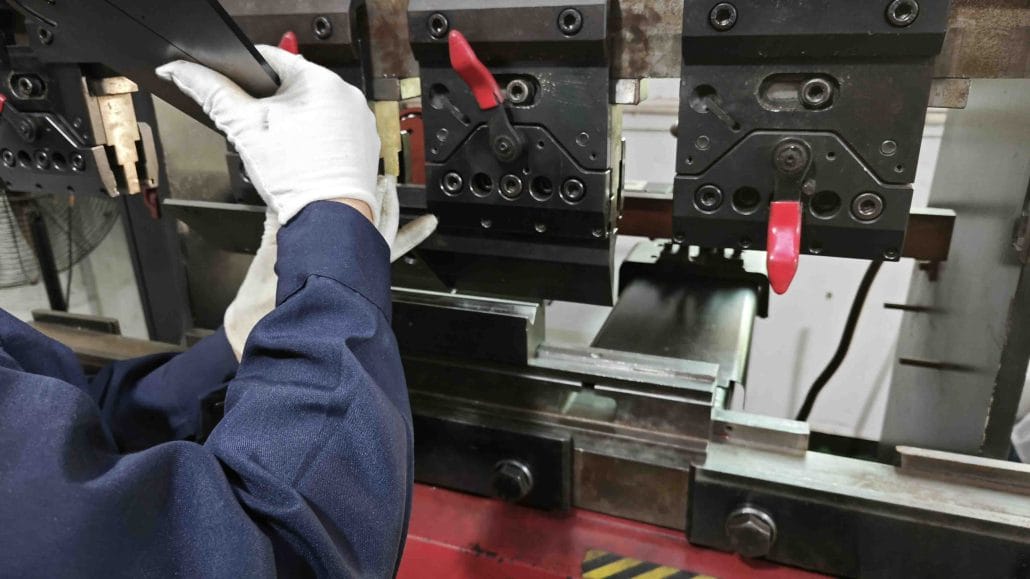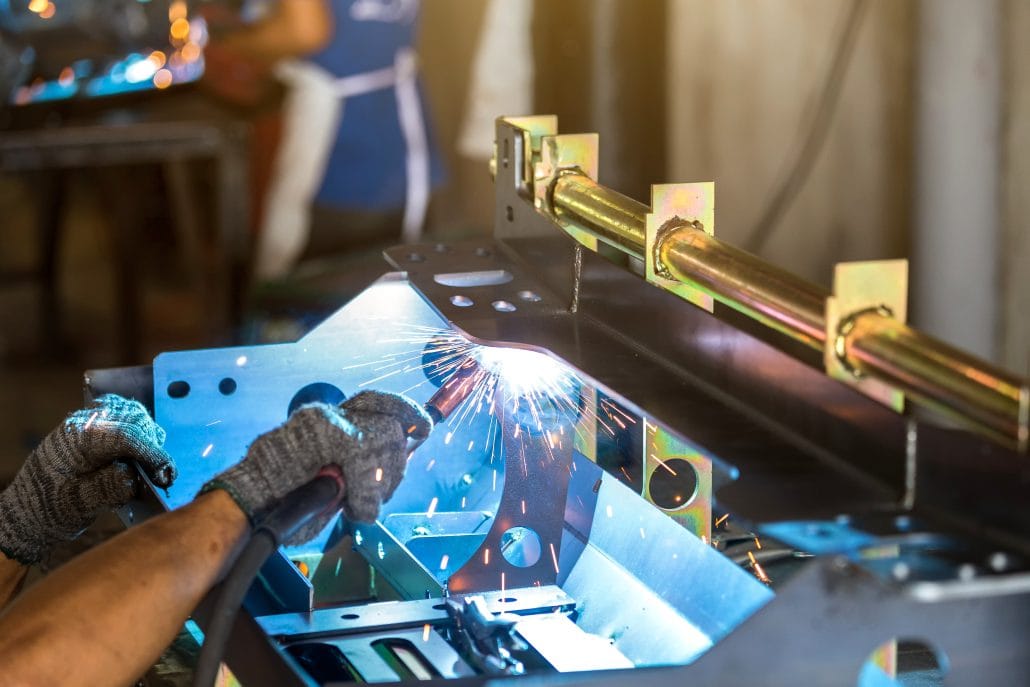This comprehensive guide explores the differences between CNC machining and sheet metal fabrication, two popular manufacturing processes for metal parts and products. It covers the advantages and disadvantages of each process, as well as their respective costs and quality considerations. Whether you’re a manufacturer or someone who needs metal parts, this guide can help you choose the best option for your needs.
What is CNC Machining?
CNC machining is a process that uses computer-controlled machines to cut and shape metal parts. The machines are programmed using computer-aided design (CAD) software, which allows for precise and accurate cuts. CNC machining is capable of producing complex parts with high precision, making it an ideal choice for applications that require tight tolerances.
One major advantage of CNC machining is its versatility. It can be used to produce parts from a wide range of materials, including metals, plastics, and composites. Additionally, CNC machines can perform a variety of operations, including drilling, milling, CNC turning, and tapping.
However, there are also some downsides to CNC machining. Perhaps the biggest disadvantage is cost. CNC machines are expensive to purchase and maintain, which can make them impractical for small-scale production runs. Additionally, programming the machines can be time-consuming and complex, which can add to the overall production time.
Advantages and Disadvantages of CNC Machining
CNC machining is a process that uses computer-controlled machines to cut and shape metal parts to produce complex parts with high precision, making it an ideal choice for applications that require tight tolerances. Some of the advantages of CNC machining include:
Advantages
- Precision and Accuracy: CNC machining is capable of producing parts with high accuracy and precision, which makes it suitable for applications that require tight tolerances.
- Versatility: CNC machines can perform a variety of operations, including drilling, milling, turning, and tapping. This versatility makes it possible to produce a wide range of complex parts.
- Material Selection: CNC machining can be used to produce parts from a wide range of materials, including metals, plastics, and composites. This makes it possible to produce parts for a variety of applications.
However, CNC machining also has its disadvantages, which include:
Disadvantages
- Cost: CNC machines are expensive to purchase and maintain, which can make them impractical for small-scale production runs. Additionally, the cost of the raw materials used in CNC machining can also be high.
- Programming Complexity: Programming CNC machines can be time-consuming and complex, which can add to the overall production time. Additionally, this complexity can make it difficult for small businesses or individuals to use CNC machining without specialized training.
- Limited Design Flexibility: CNC machining is best suited for producing parts with simple or regular shapes. Parts with complex or irregular shapes may be more difficult or expensive to produce using CNC machining.

Overall, CNC machining is an effective process for producing complex parts with high accuracy and precision. However, it may not be the best choice for all applications due to its high cost and limited design flexibility.
What is Sheet Metal Fabrication?
Sheet metal fabrication involves cutting, bending, and shaping metal sheets to create parts and products. The process is often used for applications that require large, flat parts, such as metal enclosures or panels. Sheet metal fabrication can be performed using a variety of techniques, including punching, laser cutting, and water jet cutting.
One of the biggest advantages of sheet metal fabrication is cost. The process is typically less expensive than CNC machining, especially for small-scale production runs. Additionally, the process is relatively fast and efficient, making it a good choice for projects with tight deadlines.
However, sheet metal fabrication also has some limitations. The process is best suited for flat or relatively simple parts, and may not be ideal for complex or three-dimensional shapes. Additionally, the precision of the cuts may not be as high as with CNC machining.
Advantages and Disadvantages of Sheet Metal Fabrication
Sheet metal fabrication involves cutting, bending, and shaping metal sheets to create parts and products. The process is often used for applications that require large, flat parts, such as metal enclosures or panels. Some of the advantages of sheet metal fabrication include:
Advantages
- Cost-Effective: Sheet metal fabrication is typically less expensive than CNC machining, especially for small-scale production runs. Additionally, the cost of raw materials used in sheet metal fabrication is often lower than those used in CNC machining.
- Fast and Efficient: The process of sheet metal fabrication is relatively fast and efficient, making it a good choice for projects with tight deadlines.
- Wide Range of Techniques: Sheet metal fabrication can be performed using a variety of techniques, including punching, laser cutting, and water jet cutting. This allows for a wide range of customization options.
However, sheet metal fabrication also has some limitations, which include:
Disadvantages
- Limited Design Flexibility: Sheet metal fabrication is best suited for flat or relatively simple parts, and may not be ideal for complex or three-dimensional shapes.
- Precision of Cuts: The precision of the cuts made during sheet metal fabrication may not be as high as with CNC machining.
- Limited Material Selection: While sheet metal fabrication can be used to produce parts from a variety of metals, the range of materials that can be used is more limited than with CNC machining.
Overall, sheet metal fabrication is a cost-effective option for producing flat or simple parts, and is well-suited for applications that require large, flat parts. However, it may not be the best choice for projects that require complex or three-dimensional shapes, or the highest levels of precision.

Differences Between CNC Machining and Sheet Metal Fabrication
CNC machining and sheet metal fabrication are two popular processes for manufacturing metal parts and products. While both involve cutting and shaping metal, there are some significant differences between the two. Here are some key differences to keep in mind:
- Process: CNC machining uses computer-controlled machines to cut and shape metal parts, while sheet metal fabrication involves cutting, bending, and shaping metal sheets to create parts and products.
- Suitability: CNC machining is ideal for producing complex parts with tight tolerances, while sheet metal fabrication is better suited for flat or simple parts.
- Cost: CNC machining is more expensive than sheet metal fabrication, especially for small-scale production runs.
- Versatility: CNC machining is capable of producing parts from a wide range of materials, while sheet metal fabrication is limited to metals that can be cut and bent easily.
- Precision: CNC machining is capable of producing parts with high accuracy and precision, while the precision of the cuts made during sheet metal fabrication may not be as high.
When choosing between CNC machining and sheet metal fabrication, it’s important to consider the specific requirements of your project and choose the option that best meets your needs.

CNC Machining and Sheet Metal Fabrication Cost & Quality
CNC machining and sheet metal fabrication are both widely used in the manufacturing industry. One of the key factors that companies consider when choosing between these two processes is cost and quality. Here is a closer look at how CNC machining and sheet metal fabrication compare in terms of cost and quality.
CNC Machining Cost & Quality
CNC machining is known for its high quality and precision, which makes it a popular choice for producing complex parts with tight tolerances. However, this quality comes at a cost. CNC machines are expensive to purchase and maintain, and the cost of raw materials used in CNC machining can also be high. Additionally, programming the machines can be time-consuming and complex, which can add to the overall production time.
Sheet Metal Fabrication Cost & Quality
Sheet metal fabrication is typically less expensive than CNC machining, especially for small-scale production runs. Additionally, the cost of raw materials used in sheet metal fabrication is often lower than those used in CNC machining. However, the precision of the cuts made during sheet metal fabrication may not be as high as with CNC machining. Additionally, sheet metal fabrication is best suited for flat or relatively simple parts, and may not be ideal for complex or three-dimensional shapes.
Conclusion
When it comes to cost and quality, CNC machining and sheet metal fabrication both have their advantages and disadvantages. CNC machining is known for its high quality and precision, but it can be expensive and time-consuming. Sheet metal fabrication, on the other hand, is typically less expensive than CNC machining, but may not be as precise or suitable for complex shapes. Ultimately, the choice between these two processes will depend on the specific requirements of your project and your budget.
FAQ
When choosing between the two processes, it’s important to consider the specific requirements of your project and choose the option that best meets your needs. CNC machining is ideal for producing complex parts with tight tolerances, while sheet metal fabrication is better suited for flat or simple parts. Additionally, CNC machining is more expensive than sheet metal fabrication, especially for small-scale production runs.
The main difference between CNC machining and sheet metal fabrication is the materials used. CNC machining can be used to create precision components from a variety of materials, while sheet metal fabrication is primarily used for metal components.
The time it takes to complete each process depends on the complexity of the design and the size of the components being produced. CNC machining typically takes longer than sheet metal fabrication, as it involves more steps and requires more precise machinery.
In conclusion, both CNC machining and sheet metal fabrication have their own unique advantages and disadvantages. CNC machining is ideal for producing complex parts with tight tolerances, while sheet metal fabrication is a cost-effective option for producing flat or simple parts. When choosing between the two processes, it’s important to consider the specific requirements of your project and choose the option that best meets your needs.

